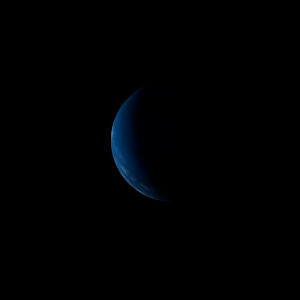|
|
Space Astro
|
Info for exoplanet "Uqbosri-mecres"
| Scientific (actual) data |
|---|
| Planet | Kepler-353 b |
| Planet status | Confirmed |
| Radius | 0.079 |
| Orbital period | 5.79528 |
| Semi major axis | 0.051 |
| Discovered | 2014 |
| Updated | 2021-02-05 |
| Tconj | 2454970 |
| Impact parameter | 0.27 |
| Publication | Announced on a website |
| Detection type | Primary Transit |
| Alternate names | 2MASS J19472559+4145294 b, K02036.02, KIC 6382217 b, KOI-2036 b, KOI-2036.02, Kepler-353 A b, WISE J194725.58+414529.1 b |
| Star name | Kepler-353 |
| Right ascension | 296.86° |
| Declination | 41.76° |
| Mag j | 13.601 |
| Mag h | 12.951 |
| Mag k | 12.808 |
| Star distance | 388.92 |
| Star metallicity | -0.194 |
| Star mass | 0.54 |
| Star radius | 0.5 |
| Star temperature | 3903 |
| Star alternate names | 2MASS J19472559+4145294, KIC 6382217, KOI-2036, Kepler-353 A, WISE J194725.58+414529.1 |
| Wikipedia article | Kepler-353 b |
Back
| |
| Fictional info (?) |
|---|
| Suggested name | Uqbosri-mecres |
| Planet type | Hot planet |
| Uqbosri-mecres is the fourth planet from Kepler-353 and the second-smallest planet in its solar system.
The planet is named after the deity Uqbosri-mecres, the goddess of nature.
When viewed from Earth, this proximity to Kepler-353 means the planet can only be seen near the western or eastern horizon during the early evening or early morning.
The outer atmosphere is visibly segregated into several bands at different latitudes, resulting in turbulence and storms along their interacting boundaries.
Future targets for exploration in the Uqbosri-mecres system include the probable ice-covered liquid ocean of its moon Clijot. |
| Atmosphere | Argon | 47% |
| 2H2O | 29% |
| Hydrogen | 16% |
| Carbon dioxide | 4% |
| Molecular hydrogen | 3.2% |
| Hydrogen deuteride (HD) | 0.072% |
| Atmospheric pressure | 4 bar |
 |
| Moon | Clijot | Small potato shaped gaseous comet |
| Cali | Huge round rocky moon |
| Google search for Uqbosri-mecres |
|
Website by Joachim Michaelis
|
|
|
|